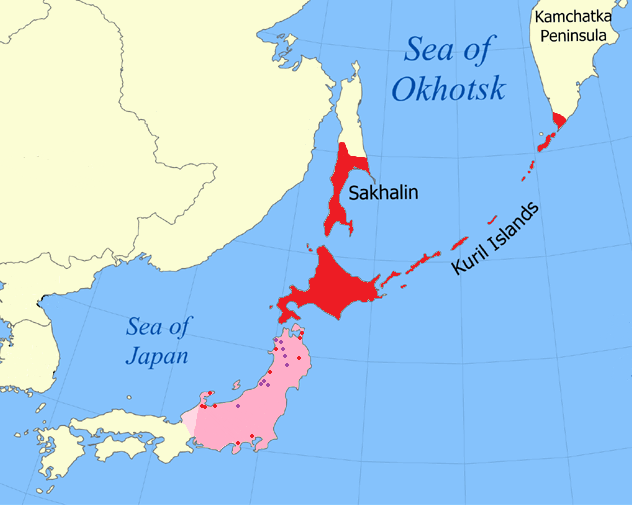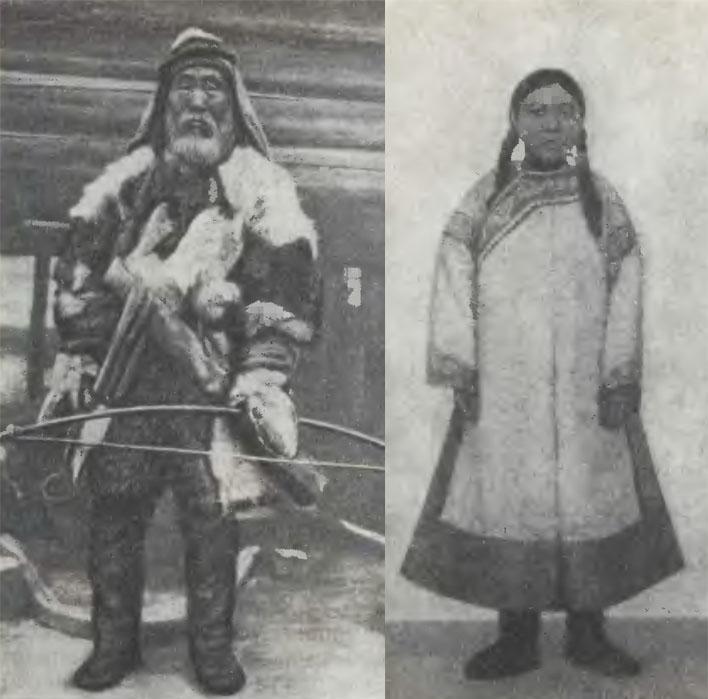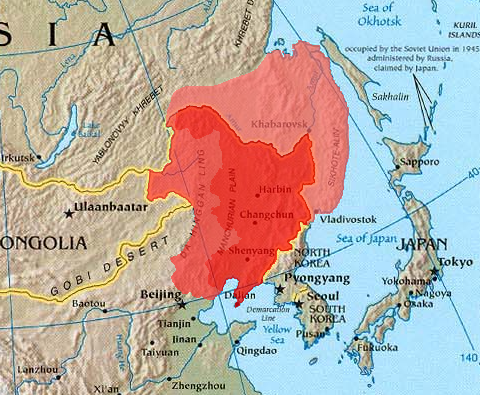|
Nivkhs
The Nivkh, or Gilyak (also Nivkhs or Nivkhi, or Gilyaks; ethnonym: Нивхгу, ''Nʼivxgu'' (Amur) or Ниғвңгун, ''Nʼiɣvŋgun'' (E. Sakhalin) "the people"), are an indigenous ethnic group inhabiting the northern half of Sakhalin Island and the lower Amur River and coast on the adjacent Russian mainland and historically possibly parts of Manchuria. Nivkh were traditionally fishermen, hunters, and dog breeders. They were semi-nomadic, living near the coasts in the summer and wintering inland along streams and rivers to catch salmon. The land the Nivkh inhabit is characterized as taiga forest with cold snow-laden winters and mild summers with sparse tree cover. The Nivkh are believed to be the original inhabitants of the region, and to derive from a proposed Neolithic people that migrated from the Transbaikal region during the Late Pleistocene.Fitzhugh, William, and Durbreui pp.39, 40 The Nivkh had long maintained trade and cultural relations with neighboring China and ... [...More Info...] [...Related Items...] OR: [Wikipedia] [Google] [Baidu] |
Nivkh Language
Nivkh (; occasionally also Nivkhic; self-designation: Нивхгу диф, ''Nivxgu dif'', ), or Gilyak (), or Amuric, is a small language family, often portrayed as a language isolate, of two or three mutually unintelligible languages spoken by the Nivkh people in Outer Manchuria, in the basin of the Amgun (a tributary of the Amur), along the lower reaches of the Amur itself, and on the northern half of Sakhalin. "Gilyak" is the Russian rendering of terms derived from the Tungusic "Gileke" and Manchu-Chinese "Gilemi" (Gilimi, Gilyami) for culturally similar peoples of the Amur River region, and was applied principally to the Nivkh in Western literature. The population of ethnic Nivkhs has been reasonably stable over the past century, with 4,549 Nivkhs counted in 1897 and 4,673 in 1989. However, the number of native speakers of the Nivkh language among these dropped from 100% to 23.3% in the same period, so by the 1989 census there were only 1,079 first-language speakers l ... [...More Info...] [...Related Items...] OR: [Wikipedia] [Google] [Baidu] |
Sakhalin
Sakhalin ( rus, Сахали́н, r=Sakhalín, p=səxɐˈlʲin; ja, 樺太 ''Karafuto''; zh, c=, p=Kùyèdǎo, s=库页岛, t=庫頁島; Manchu: ᠰᠠᡥᠠᠯᡳᠶᠠᠨ, ''Sahaliyan''; Orok: Бугата на̄, ''Bugata nā''; Nivkh: Yh-mif) is the largest island of Russia. It is north of the Japanese archipelago, and is administered as part of the Sakhalin Oblast. Sakhalin is situated in the Pacific Ocean, sandwiched between the Sea of Okhotsk to the east and the Sea of Japan to the west. It is located just off Khabarovsk Krai, and is north of Hokkaido in Japan. The island has a population of roughly 500,000, the majority of which are Russians. The indigenous peoples of the island are the Ainu, Oroks, and Nivkhs, who are now present in very small numbers. The Island's name is derived from the Manchu word ''Sahaliyan'' (ᠰᠠᡥᠠᠯᡳᠶᠠᠨ). Sakhalin was once part of China during the Qing dynasty, although Chinese control was relaxed at times. Sakhalin ... [...More Info...] [...Related Items...] OR: [Wikipedia] [Google] [Baidu] |
Ainu People
The Ainu are the indigenous people of the lands surrounding the Sea of Okhotsk, including Hokkaido Island, Northeast Honshu Island, Sakhalin Island, the Kuril Islands, the Kamchatka Peninsula and Khabarovsk Krai, before the arrival of the Yamato Japanese and Russians. These regions are referred to as in historical Japanese texts. Official estimates place the total Ainu population of Japan at 25,000. Unofficial estimates place the total population at 200,000 or higher, as the near-total assimilation of the Ainu into Japanese society has resulted in many individuals of Ainu descent having no knowledge of their ancestry. As of 2000, the number of "pure" Ainu was estimated at about 300 people. In 1966, there were about 300 native Ainu speakers; in 2008, however, there were about 100. Names This people's most widely known ethnonym, "Ainu" ( ain, ; ja, アイヌ; russian: Айны) means "human" in the Ainu language, particularly as opposed to , divine beings. Ainu also ... [...More Info...] [...Related Items...] OR: [Wikipedia] [Google] [Baidu] |
Ulch People
The Ulch people, also known as Ulch or Ulchi, (russian: ульчи, obsolete ольчи; Ulch: , nani) are an indigenous people of the Russian Far East, who speak a Tungusic language known as Ulch. Over 90% of Ulchis live in Ulchsky District of Khabarovsk Krai, Russia. According to the 2002 Census, there were 2,913 Ulchs living in Russia — down from 3,173 recorded in the 1989 Census, but up from 2,494 recorded in the 1979 Census, and 2,410 recorded in the 1970 Census. According to the 2010 Census there were 2,765 Ulchs in Russia. History The Ulch people descend from the autochthonous Paleolithic population of coastal Northeast Asia and were found to be very similar to ancient samples found in this region from about 8000 years ago. The Ulch people are often classified as one of the ancient Paleosiberian peoples, which is however not an ethno-linguistic group but a term applied to various ethnic groups of Siberia which do not belong to the bigger Northeast Asian ... [...More Info...] [...Related Items...] OR: [Wikipedia] [Google] [Baidu] |
Nivkh Settlements 2002 Map Vector
Nivkh or Amuric or Gilyak may refer to: * Nivkh people (''Nivkhs'') or Gilyak people (''Gilyaks'') * Nivkh language or Gilyak language * ''Gilyak'' class gunboat, such as the second Russian gunboat Korietz See also * Gilak (other) Gilak may refer to: * Gilaks, an Iranian ethnic group * Gilak language, a member of the northwestern Iranian language branch See also * Gilyak (other) {{disambig ... {{disambig Language and nationality disambiguation pages ... [...More Info...] [...Related Items...] OR: [Wikipedia] [Google] [Baidu] |
Amur River
The Amur (russian: река́ Аму́р, ), or Heilong Jiang (, "Black Dragon River", ), is the world's tenth longest river, forming the border between the Russian Far East and Northeastern China ( Inner Manchuria). The Amur proper is long, and has a drainage basin of . ''mizu'' ("water") in Japanese. The name "Amur" may have evolved from a root word for water, coupled with a size modifier for "Big Water". Its ancient Chinese names were ''Yushui'', ''Wanshui'' and ''Heishui'', formed from variants to ''shui'', meaning "water".The fishes of the Amur River:updated check-list and zoogeography'' The modern Chinese name for the river, ''Heilong Jiang'' means "Black Dragon River", while the Manchurian name ''Sahaliyan Ula'', the Mongolian names " Amar mörön " (Cyrillic: Амар мөрөн) originates from the name " Amar " meaning to rest and ''Khar mörön'' (Cyrillic: Хар мөрөн) mean Black River. Course The river rises in the hills in the western part of Northea ... [...More Info...] [...Related Items...] OR: [Wikipedia] [Google] [Baidu] |
Indigenous Peoples Of Siberia
Siberia, including the Russian Far East, is a vast region spanning the northern part of the Asian continent, and forming the Asiatic portion of Russia. As a result of the Russian conquest of Siberia (17th to 19th centuries) and of the subsequent population movements during the Soviet era (1917-1991), the modern-day demographics of Siberia is dominated by ethnic Russians ( Siberiaks) and other Slavs. However, there remains a slowly increasing number of indigenous groups, between them, accounting for about 10% of the total Siberian population (about 4,500,000), some of which are closely genetically related to indigenous peoples of the Americas. History In Kamchatka, the Itelmens' uprisings against Russian rule in 1706, 1731, and 1741, were crushed. During the first uprising the Itelmen were armed with only stone weapons, but in later uprisings they used gunpowder weapons. The Russian Cossacks faced tougher resistance from the Koryaks, who revolted with bows and guns f ... [...More Info...] [...Related Items...] OR: [Wikipedia] [Google] [Baidu] |
Manchuria
Manchuria is an exonym (derived from the endo demonym "Manchu") for a historical and geographic region in Northeast Asia encompassing the entirety of present-day Northeast China (Inner Manchuria) and parts of the Russian Far East ( Outer Manchuria). Its meaning may vary depending on the context: * Historical polities and geographical regions usually referred to as Manchuria: ** The Later Jin (1616–1636), the Manchu-led dynasty which renamed itself from "Jin" to "Qing", and the ethnicity from "Jurchen" to "Manchu" in 1636 ** the subsequent duration of the Qing dynasty prior to its conquest of China proper (1644) ** the northeastern region of Qing dynasty China, the homeland of Manchus, known as "Guandong" or "Guanwai" during the Qing dynasty ** The region of Northeast Asia that served as the historical homeland of the Jurchens and later their descendants Manchus ***Qing control of Dauria (the region north of the Amur River, but in its watershed) was contested in 1643 ... [...More Info...] [...Related Items...] OR: [Wikipedia] [Google] [Baidu] |
Mishihase
The , also read as Ashihase and Shukushin, were a people of ancient Japan, believed to have lived along the northern portion of the coast of the Sea of Japan. The term Sushen, rendered 肅愼, is found in Chinese records, but is annotated as Mishihase or Ashihase in Japanese language documents, which should have developed into *''Mishiwase'' or *''Ashiwase'' in modern Japanese if the word had survived in colloquial speech. According to the '' Nihon Shoki'', the Mishihase first arrived at Sado Island during the reign of Emperor Kinmei. In 660, Japanese General Abe no Hirafu defeated the Mishihase in ''"Watarishima"'' at the request of the native inhabitants. During the Edo period, Arai Hakuseki proposed that Watarishima was Ezo, which was later renamed Hokkaidō. The battle place was recorded as the mouth of a large river, which is proposed to be Ishikari River. Some historians consider that the Mishihase were identical to the Tungusic Sushen in Chinese records, but other ... [...More Info...] [...Related Items...] OR: [Wikipedia] [Google] [Baidu] |
Okhotsk Culture
The Okhotsk culture is an archaeological coastal fishing and hunter-gatherer culture that developed around the southern coastal regions of the Sea of Okhotsk, including Sakhalin, northeastern Hokkaido, and the Kuril Islands during the last half of the first millennium to the early part of the second. The Okhotsk are one of the ancestral components of the Ainu people and probably contributed the Ainu languages and significant cultural elements. It is suggested that the bear cult, a practice shared by various Northern Eurasian peoples, the Ainu and the Nivkhs, was an important element of the Okhotsk culture but was uncommon in Jomon period Japan. Archaeological evidence indicates that the Okhotsk culture proper originated in the 5th century AD from the Susuya culture of southern Sakhalin and northern Hokkaido. Etymology The Okhotsk culture is named after the eponymous Sea of Okhotsk, which is named after the Okhota river, which is in turn named after the Even word () meani ... [...More Info...] [...Related Items...] OR: [Wikipedia] [Google] [Baidu] |





